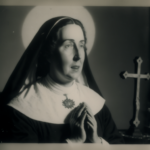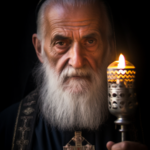St. Willibald
St. Willibald
When they lived:
St. Willibald was born around 700 AD and died on July 7, 787 AD.
Where they lived:
St. Willibald lived during a time when Europe was undergoing significant cultural and religious transformations. He was born in Wessex, a region in what is now modern-day England. He later traveled extensively and played a vital role in spreading Christianity in Europe, making significant contributions in Germany and Italy.
Notable world events during the time of their life:
- Charlemagne’s Coronation (800 AD): Just a few years after St. Willibald’s death, Charlemagne was crowned as the Holy Roman Emperor by Pope Leo III. This event marked a significant shift in European politics and religion, with Charlemagne’s reign being a pivotal moment in the history of medieval Europe.
- Islamic Golden Age (8th century): While St. Willibald was active, the Islamic world was experiencing a period of enlightenment and progress known as the Islamic Golden Age. This era saw significant advancements in various fields, including mathematics, astronomy, medicine, and philosophy.
- Viking Raids (8th century): St. Willibald’s time was marked by the expansion of Viking raids across Europe. These invasions greatly impacted the political and social landscape of Northern Europe and led to the eventual Viking Age, which continued for several centuries.
- Carolingian Renaissance (8th-9th centuries): The Carolingian Renaissance, a revival of art, culture, and learning, was taking place in Europe during St. Willibald’s lifetime. This cultural resurgence laid the foundation for the medieval intellectual and artistic achievements that followed.
- Death of Empress Wu Zetian (705 AD): In the East, the formidable Empress Wu Zetian of China died around the time of St. Willibald’s birth. Her reign as China’s only female emperor left a lasting impact on Chinese history and gender roles.
- Alcuin’s Educational Reforms (8th century): Alcuin of York, a prominent scholar and teacher, was active during St. Willibald’s lifetime. Alcuin’s educational reforms in the Carolingian Empire played a crucial role in shaping medieval education.
Their patronage:
St. Willibald is recognized as the patron saint of travelers, pilgrims, and people seeking safe journeys. His own extensive travels throughout Europe, particularly in the service of spreading Christianity, make him an inspiring figure for those embarking on journeys, whether physical or spiritual. His story is a testament to the power of faith and the courage to venture into the unknown, making him a compelling patron for all who seek guidance and protection while on their life’s journeys.
Early Life
St. Willibald was a bishop in Bavaria in the 8th century. He was born in 700 AD on the 21st of October, and he died in 787 AD. His father was St. Richard the Pilgrim, who was the chieftain of Wessex, and his mother was St. Wuna of Wessex, who was also a sister to St. Boniface. His brother was St. Winibald, and his sister was St. Walburga. Looking at his family tree, one can say he was destined to be a saint.
When he was three years old, St. Willibard suffered a terrible illness, and his parents prayed to God. While praying, the parents vowed that they would dedicate St. Willibarld to monastic life if his life was spared. He survived the illness, and when he was five years old, he entered the Benedictine monastery.
Life in the Monastery
When he was in the monastery, he was educated by Abbot Egwald, and he became accustomed to the Irish and Anglo-Saxon monastic ideal of pious rootlessness.
St. Willibald was known for extensive traveling, and in 721 he set out on a pilgrimage to Rome with his father and brother. They went there on a ship, and when they arrived in France, they set about visiting shrines and spending most of their time in prayer. They then arrived in Lucca, a city that is in northern Italy, and his father became gravely ill, and sadly, he died.
After they had managed to bury their father, Willibald and Winibald continued with their journey until they reached Rome. When they were in Rome, they visited the Lateran Basilica and St. Peter’s. They spent some time in Italy, strengthening their devotion and discipline; unfortunately, the two brothers became ill with the black plague.
The Pilgrimage
After they had recovered, they left Rome in 724 and departed by sea, visiting Sicily and Greece along the way. After the departure of his brother, Willibald lived in a monastery in Rome. Some of the areas that St. Willibald visited when they were in Greece include Ephesus, Lycia, and Mount Chelidonium. They almost died of hunger and thirst. However, they managed to cross until they reached the church of Saint John the Baptist.
Willibald and his seven companions also went to Palestine on an a pilgrimage that started in 723 and ended in 726, and they visited Nazareth, Bethlehem, and Egypt. They even went to Cana, Capernaum, and Jerusalem. The pilgrimage continued to the Church of the Nativity, Theca, and the great lavra of St. Sabbas. They also went to the port cities of Gaza, Hebron, Lydda, Joppa, Tyr, and Sidon. They even went to Samaria and again reached Tyre by way of the ladder of Tyre.
After some time in Tyre, Willibald was able to return to Constantinople, where he remained for two years, from 727 to 729, where he was provided with a small room in the Church of the Holy Apostles. He spent his time studying the documents from the first council of Nicaea, which was arranged by Emperor Constantine.
After Constantinople, he sailed to Sicily, and he arrived in Naples approximately seven years after he had left Italy. St. Willibald and his remaining companion, Tidbercht, joined the Benedictine community at Monte Casino. When he was there, he taught the community about his travels, and he spent more than ten years at Monte Casino and another local Benedictine monastery, where he served as a sacristan, dean, and porter.
His life in Germany
In 738, Saint Boniface requested the Pope allow St. Willibald to assist him in his missions in Germany. The pope was delighted about St. William’s history of travels, and he granted St. Boniface’s request.
St. Willibald was ordained priest by Boniface in 741 and asked to begin missionary work in Eichstatt. After a year, he was summoned to Thuringia, where he met his brother Willibald, whom he had not seen in over eight years.
In 746, St. Boniface consecrated Willibald as the Bishop of Eichstatt. Eichstatt was the site of Willibald’s most successful missionary efforts, although there are no statistics for the number of converts. The monastery was one of the first buildings in the region, and it served as an important center.
St. Willibald lived in the monastery and entertained visitors from throughout Europe who would come to hear about his journey and monasticism.
Legacy
St. Willibald is the patron saint of Eichstatt, which is a diocese in Germany, and his feast day is June 7. He is venerated in the Roman Catholic Church and the Eastern Orthodox Church.
5 Interesting Facts About St. Willibald
- St. Willibald is the first known Englishman to visit the Holy Land.
- He comes from a family of saints.
- St. Willibald’s experiences play a major role in the Reformation.
and future prosperity of his monastery - St. Willibald’s mother was reportedly St. Boniface’s sister.
- St. Willibald served as the bishop of the region of Franconia for
over four decades.
Prayer to St. Willibald
I joyfully salute you today, O royal virgin, and I thank you especially for that great love with which, together with your brothers Willibald and Winibald, you brought the light of faith to our ancestors. O holy virgin, by your great merits, I pray and beseech you to enlighten me by your example and help me by your powerful patronage, that I may be delivered from every sinful inclination and inordinate attachment to creatures and to myself, and that I may wholly and entirely lose myself in God. Your heroic courage in despising earthly goods encourages and helps me to sever once and for all those ties that still bind me to the world and its pleasures. May your burning love for souls deliver me from all lukewarmness so that I may die to the world and strive after Heaven. Amen.



